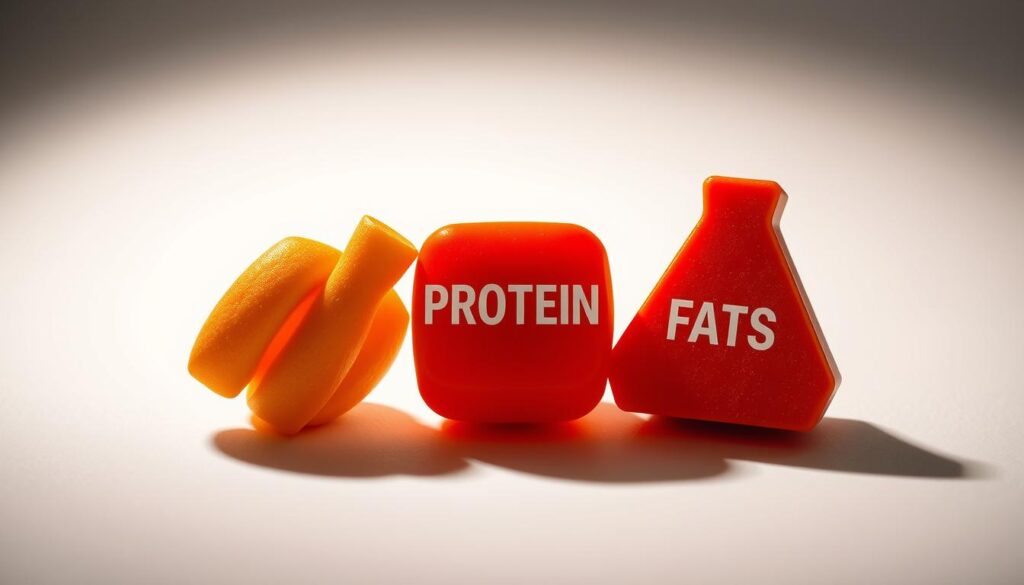Ever felt like your energy goes up and down, no matter what? Physical energy balance is key to how we feel and do things. It’s about the calories we eat and burn, affecting our weight and heart health. When it’s off, it’s not just about weight. It’s about living life fully, in every moment.
Imagine a day where you’re full of energy, thanks to choices that support your goals. This guide will help you find your way. By learning about resting metabolic rate (RMR) and how small movements add up, you’ll see how every choice affects your health.
Key Takeaways
- Maintaining physical energy balance prevents chronic diseases linked to weight gain.
- Resting metabolic rate (RMR) alone accounts for most daily calorie burn.
- Energy management involves spiritual, mental, and social factors, not just diet.
- Quality sleep and enjoyable exercise boost energy levels by up to 70% in many cases.
- Unmanaged stress or poor environments can drain energy faster than we realize.
Understanding Physical Energy Balance
Physical energy balance is about the calories we eat and the energy we use every day. It’s not just about weight. It affects how our organs work, how clear our minds are, and how full of life we feel. When we eat and use energy equally, our bodies stay balanced. Eating more than we use leads to storing energy, while using more than we eat makes us lose it.
“Regular physical activity is key to maintaining energy balance. Adults should aim for 150 minutes of moderate exercise weekly.” – World Health Organization
To manage energy well, we need to know three main things: Basal Metabolic Rate (BMR), how active we are, and what we eat. BMR uses 60-75% of our daily energy. Physical activity adds 15-30%. Even a small daily energy imbalance, like 50 calories, can add up. Over 100 days, that’s 3,500 calories, or about 1 pound of weight change.
- BMR varies: Muscle mass, age, and genetics influence energy needs
- High-protein diets boost thermic effect of food (TEF), 5-10% of total energy use)
- NEAT (non-exercise activity thermogenesis) can differ by 2,000 calories daily between individuals
To get this balance right, we need to match what we eat with how active we are. Eating foods full of B vitamins and iron helps keep our energy up. Making small changes in energy management can stop metabolic problems and improve how we feel every day. Every choice we make, from how long we exercise to what we eat, affects this important balance.
The Science Behind Energy Balance
Learning how calories are counted is vital for managing calorie intake and keeping metabolic health in check. Scientists employ precise tools to monitor energy use in our bodies. They show us how food turns into fuel.
Bomb calorimetry burns food samples to measure their energy content. Indirect calorimetry, on the other hand, analyzes breath to track energy use in real-time. It calculates oxygen and carbon dioxide levels to see if the body burns fats or carbs.
| TDEE Component | Percentage of Daily Energy Use | Primary Role |
|---|---|---|
| Basal Metabolic Rate (BMR) | 70% | Energy needed for basic bodily functions |
| Non-Exercise Activity Thermogenesis (NEAT) | 15% | Energy spent on daily movements |
| Thermic Effect of Food (TEF) | 10% | Energy used to digest and absorb nutrients |
| Exercise Activity Thermogenesis (EAT) | 5% | Energy burned during intentional workouts |
Formulas like the Mifflin-St Jeor equation estimate BMR based on age, weight, and activity level. Yet, these are just estimates. Individual differences in metabolism mean results can vary. Tracking these factors helps create personalized plans to maintain energy balance and support metabolic health.
Factors Influencing Physical Energy Balance
Our physical energy balance is shaped by more than just our lifestyle. Our genes play a big role in how we store fat, burn calories, and feel hungry. These genetic traits affect our metabolic health in different ways, making each person’s journey unique.
Genetic Factors
Scientists have found important genes that change how we use energy. For example:
- FTO gene variants can make us more likely to be obese by messing with hunger signals and fat storage.
- PPARG gene mutations can affect how well we use insulin and burn fat.
- Thyroid hormone pathways set our metabolic rates, and these can vary a lot between people.
“Genetic factors account for 40–70% of BMI variability,” states a 2023 study. “Yet lifestyle adjustments can override these predispositions.”
Understanding your genetic makeup is key to good metabolic health. If you have genes that help you burn fat well, you might do better on high-fat diets. On the other hand, some people might do better with more carbs. Tailoring your diet and exercise to your genetic profile can make a big difference.
Even though we can’t change our DNA, we can adapt our habits to fit our genetic makeup. Eating foods that match your metabolic needs and doing exercises that boost your energy can help. This way, you can work with your body’s natural strengths.
Factors Influencing Physical Energy Balance
Our daily habits greatly affect our energy balance. Health and wellness depend on the choices we make. These choices fuel our bodies and keep us active. Let’s look at how our daily routines impact energy levels and our metabolic health over time.

- Diet: Eating too much of ultra-processed foods and large portions can lead to excess calorie intake.
- Activity: Sitting for long periods lowers NEAT (non-exercise activity thermogenesis), which is 20% of daily energy burn.
- Sleep: Not getting enough sleep messes with hunger hormones, making us want to eat more and consume more calories.
- Stress: Ongoing stress raises cortisol levels, leading to fat storage and emotional eating.
| Macronutrient | Thermic Effect of Food (TEF) |
|---|---|
| Protein | 20–30% of calories burned during digestion |
| Carbohydrates | 5–10% of calories burned during digestion |
| Fats | 0–3% of calories burned during digestion |
“Regular physical activity is essential for health and wellness, regardless of initial weight status.” — World Health Organization
Here are some practical steps to improve energy balance:
- Take movement breaks every hour to increase NEAT.
- Opt for whole foods high in protein to boost metabolic efficiency.
- Get 7-9 hours of sleep each night to keep hunger hormones in check.
Making small changes can make a big difference. Focus on mindful eating, regular activity, and managing stress. These actions help you control your energy balance. They lay the groundwork for lasting health and wellness and steady energy levels.
Factors Influencing Physical Energy Balance
Our surroundings play a big role in how we manage energy and stay active. Things like neighborhood layouts and office designs subtly guide our choices. Let’s look at how these elements affect our energy balance.
Environmental Influences
Environmental cues have a big impact on our energy use and physical activity. Here are some key areas to consider:
“Emerging insights suggest that energy—not time—is our most valuable resource.”
- Built environment: Walkable neighborhoods with parks encourage more physical activity.
- Social norms: The culture at work or in social settings influences our eating and activity.
- Economic access: Limited access to healthy food and high costs can affect our energy intake.
- Digital spaces: Too much screen time leads to less movement and more calorie intake from ads.
| Factor | Impact on Energy Management | Impact on Physical Activity |
|---|---|---|
| Walkable communities | Promotes calorie expenditure | Increases daily movement |
| Climate-controlled spaces | Reduces natural calorie-burning mechanisms | Encourages sedentary behavior |
| Food marketing | Skews dietary choices | Associated with reduced activity |
Studies show that older adults in less walkable areas burn fewer calories. For example, a study found that those in high total energy expenditure (TEE) groups ate more protein. This shows how environment and intake are connected. Digital spaces, like offices with standing desks, can encourage healthier choices without us even trying.
By improving our environments, from parks to office layouts, we can make systems that support energy management and physical activity. This way, we don’t have to rely only on our willpower.
Energy Intake: Fueling Your Body
Every bite you take adds to your calorie intake. But, how those calories help with nutrition and exercise depends on the macronutrients you choose. Proteins, carbohydrates, and fats work together to fuel your body, repair tissues, and keep energy balanced. Let’s look at how each macronutrient powers your body.

Understanding Macronutrients
These three nutrients are the base of your diet:
- Proteins (4 calories/gram): build muscle and boost metabolism. Eating lean sources like chicken or fish increases calorie burn during digestion due to their high thermic effect.
- Carbohydrates (4 calories/gram): your body’s quick energy source. Complex carbs (oats, quinoa) provide steady fuel for workouts, while simple carbs (bananas) offer quick recovery energy post-exercise.
- Fats (9 calories/gram: support hormone health and long-term energy. Opt for omega-3 rich foods like salmon or walnuts to sustain endurance activities.
Timing is key. Before exercise, carbs fuel muscles, while post-workout protein aids recovery. Skipping this balance risks sluggish performance or weight gain—42% of Americans face obesity due to poor macronutrient choices. Pair your calorie intake with mindful nutrition and exercise to align with your goals.
Protein’s thermic effect alone burns 20-30% of its calories during digestion, making it a smart choice for weight management. Carbs and fats each serve unique roles, so tailoring ratios to your activity level ensures optimal energy use. Small, frequent meals rich in these nutrients can help avoid the 1-2% annual BMR drop after age 30.
Energy Intake: Fueling Your Body
Macronutrients give us the calories we need, but micronutrients are the real heroes. Vitamins and minerals help turn food into energy. They also support exercise and daily activities. It’s important to focus on these nutrients for long-term health and wellness.
- B Vitamins: Thiamine, riboflavin, and B12 help break down carbs into energy.
- Iron: It’s key for carrying oxygen, helping with aerobic exercise.
- Magnesium: It activates enzymes for making ATP, our energy source.
- Antioxidants (C and E): They protect cells from damage during intense workouts.
| Nutrient | Role | Food Sources |
|---|---|---|
| B Vitamins | Carbohydrate metabolism | Whole grains, eggs, spinach |
| Iron | Oxygen delivery | Lean meats, lentils, fortified cereals |
| Magnesium | ATP production | Almonds, avocado, quinoa |
| Zinc | Immune and metabolic function | Oysters, chickpeas, cashews |
Getting enough nutrients prevents fatigue and boosts exercise performance. Eat whole foods like colorful veggies, nuts, and lean proteins. They provide a rich mix of nutrients for nutrition and exercise goals. While supplements can help, real foods offer extra benefits like fiber and phytonutrients.
For those who are active, tracking micronutrients along with calories is key. Even small gaps, like low iron in plant-based diets, can slow progress. Focusing on these nutrients supports not just energy but also long-term health and wellness.
Energy Expenditure: Burning Calories
Basal metabolic rate (BMR) is the base of daily energy expenditure. It’s the calories your body burns for basic functions like breathing and circulation. Even when you’re resting, your body works hard to keep these processes going. These make up 60–75% of your daily calorie use.
Knowing about BMR helps in making plans for metabolic health and managing weight.
Basal Metabolic Rate Explained
BMR is influenced by muscle mass, age, and genetics. Let’s look at how these factors affect BMR:
- Muscle Mass: Muscle burns more calories than fat. So, having more muscle increases BMR.
- Age: BMR drops 2–3% every decade after 20 because of muscle loss.
- Gender: Men usually have higher BMRs because they have more muscle and less body fat.
| Component | % of Total Energy Expenditure |
|---|---|
| Resting Metabolic Rate (RMR) | 60–75% |
| Thermic Effect of Food (TEF) | ~10% |
| Physical Activity | 15–30% |
The Mifflin-St. Jeor equation is the best way to guess RMR. Eating more protein can help burn more calories. Avoiding extreme diets is also key, as they can lower BMR.
Doing strength training helps keep muscle and supports metabolic health. Making small changes, like walking or cooking at home, can help your body burn more calories naturally.
Energy Expenditure: Burning Calories
Physical activity is key to burning calories. It’s essential for managing energy balance. By moving more each day, we can keep our calorie intake and expenditure in check for better health.
Physical Activity Levels
Physical activity makes up 15-30% of our daily energy use. NEAT (Non-Exercise Activity Thermogenesis) is a big part of this. It includes simple actions like walking, standing, or even fidgeting. These actions can differ by up to 2,000 calories a day among people.
Replacing 10 hours of sitting with active tasks can increase energy use. This doesn’t need to be formal exercise. For example, a 20-km weekly walk burns about 1.2 MJ (288 kcal). This is because walking is 3.5 METs, which helps balance energy better than cutting calories.
Even small actions, like taking the stairs or gardening, add to our daily activity. These actions help fight against the trend of too much sitting. Wearing devices to track activity helps see how we’re doing. Studies show that even small daily energy imbalances can lead to big weight changes over time.
By focusing on physical activity, we can make sure we’re burning the right amount of energy. This is backed by data showing that more activity leads to better weight management. Every step we take helps keep our energy balance in check.
FAQ
What is physical energy balance?
How does calorie intake affect energy levels?
What role do macronutrients play in energy balance?
How can lifestyle choices impact my physical energy balance?
What are some environmental factors that affect energy management?
Why are micronutrients important for energy metabolism?
What is Basal Metabolic Rate (BMR)?
How can I increase my daily physical activity levels?
Source Links
- Mastering Energy Balance: The Key to Health and Disease Prevention | Aether Medicine – https://www.aethermedicine.com/general/mastering-energy-balance-the-key-to-health-and-disease-prevention/
- Unlocking Success By Mastering Your Energy – https://www.forbes.com/councils/forbescoachescouncil/2024/09/10/unlocking-success-by-mastering-your-energy-a-story-from-an-executive-coach/
- Mastering Your Body’s Energy Budget – A Road to Menopause Wellness – https://www.menopausecbtclinic.co.uk/blog/Body’s Energy Budget
- Nutrition, exercise, and energy balance: A comprehensive guide – https://www.revistanutricion.org/articles/nutrition-exercise-and-energy-balance-a-comprehensive-guide-106822.html
- 10.3: Energy Balance- Energy In, Energy Out—Yet Not As Simple As It Seems – https://med.libretexts.org/Courses/Lincoln_Land_Community_College/An_Introduction_to_Human_Nutrition_(Shanle_and_Dowell)/10:_Weight_Management/10.03:_Energy_Balance-_Energy_In_Energy_OutYet_Not_As_Simple_As_It_Seems
- Energy balance in health and disease: Mechanisms and interventions – https://www.revistanutricion.org/articles/energy-balance-in-health-and-disease-mechanisms-and-interventions-106823.html
- What Is Energy Balance (And Why Does It Matter)? — IMAGO NUTRITION – https://www.imagonutrition.com/articles/what-is-energy-balance
- The Human Energy Balance: Uncovering the Hidden Variables of Obesity – https://www.mdpi.com/2079-9721/13/2/55
- Does physical activity level and total energy expenditure relate to food intake, appetite, and body composition in healthy older adults? A cross-sectional study – https://pmc.ncbi.nlm.nih.gov/articles/PMC11761991/
- Energy balance – Knowledge and References | Taylor & Francis – https://taylorandfrancis.com/knowledge/Medicine_and_healthcare/Clinical_nutrition/Energy_balance/
- Food as Fuel Before, During and After Workouts – https://www.heart.org/en/healthy-living/healthy-eating/eat-smart/nutrition-basics/food-as-fuel-before-during-and-after-workouts
- Energy Balance – https://pressbooks.nebraska.edu/nutr251/chapter/energy-balance/
- The Impact of Nutrition on Energy Levels – Eastside Ideal Health Redmond – https://www.eastsideidealhealth.com/the-impact-of-nutrition-on-energy-levels/
- Body Weight Regulation – Endotext – https://www.ncbi.nlm.nih.gov/books/NBK278932/
- The Nutrition Institute – https://www.thenutritioninstitute.com/us/en/blog-how-carbs-power-your-body-and-brain-the-essential-guide-to-energy-management
- Understanding Calories | Nutrition, Energy & Metabolism – https://www.innerbody.com/nutrition/understanding-calories
- Energy Balance: Equation, Negative & Positive – https://www.vaia.com/en-us/explanations/sports-science/sports-nutrition/energy-balance/
- Gainful – https://app.gainful.com/blog/calorie_balance/
- How to Calculate Your Energy Balance to Lose Weight – https://www.verywellfit.com/calculate-your-energy-balance-equation-3495560
- Quantification of the effect of energy imbalance on bodyweight – https://pmc.ncbi.nlm.nih.gov/articles/PMC3880593/

